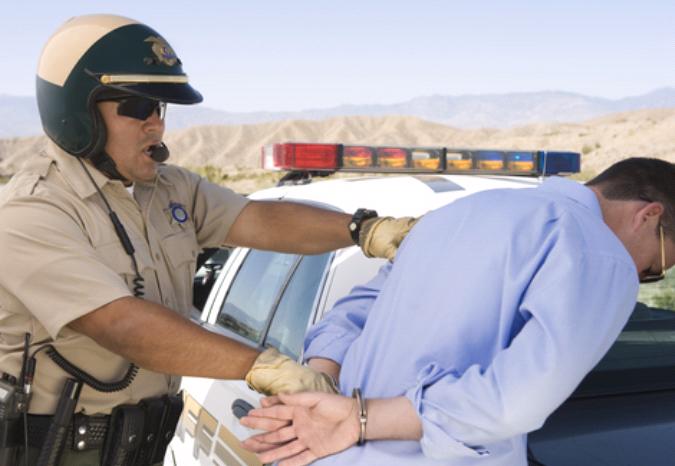Being arrested is one of the most stressful experiences a person can face. In those critical moments after handcuffs are applied, understanding your constitutional rights can make a huge difference in your case’s outcome. Every kind of legal representation will tell you how important knowing these rights is when it comes to New Jersey criminal defense.
This guide explains what rights you have after an arrest in New Jersey, from the moment you’re taken into custody through court proceedings. We’ll also highlight important differences between federal law and the New Jersey criminal justice system and discuss recent New Jersey bail reform efforts.
Understanding Your Rights After an Arrest in New Jersey
Several core constitutional protections come into play automatically the moment you’re arrested. These fundamental rights stem primarily from the Fifth, Sixth, and Eighth Amendments to the U.S. Constitution:
Miranda Rights
Perhaps the most well-known post-arrest right is your Fifth Amendment protection against self-incrimination – your right to remain silent. Police officers are required to inform you of this right through the familiar “Miranda warnings.”
When an officer states “you have the right to remain silent, and anything you say can and will be used against you in a court of law,” they’re acknowledging a critical legal protection. This right means you cannot be forced to answer questions, make statements, or confess to anything.
This matters because statements made immediately after arrest are the deciding factor in many cases. Exercising your right to remain silent is often the wisest course of action, as even innocent explanations can be misinterpreted or used against you later. In practice, this means you should clearly state “I am exercising my right to remain silent” and then stop talking – even casual conversation can be used against you.
The Right to an Attorney
Under the Sixth Amendment, you have the fundamental right to legal counsel after an arrest. This right is so important that if you can’t afford an attorney, the government must provide one for you at no cost.
In New Jersey, a New Jersey public defender is assigned at your first appearance (usually within 48 hours of arrest).
To invoke this right effectively, clearly state: “I want to speak with an attorney.” Once you say this, police must stop questioning you until your lawyer is present.
Your Rights During Police Interrogation
The period immediately following arrest is when people make the most critical mistakes. In New Jersey, it’s important to understand how to handle yourself during police questioning:
Miranda Warnings and Their Importance
Before any custodial interrogation, police must inform you of your Miranda rights. If officers fail to properly advise you of these rights, statements you make may later be ruled inadmissible in court.
However, many arrestees in New Jersey are surprised to learn that police don’t always have to read Miranda warnings immediately upon arrest. These warnings are only required before questioning while in custody. If you’re arrested but not questioned, officers may not read you your rights at all.
New Jersey Bail Reform
The Eighth Amendment protects you from excessive fines, cruel and unusual punishment, and excessive bail. New Jersey’s bail system underwent a significant overhaul in 2017, and understanding these changes is crucial if you’ve been arrested:
New Jersey’s Risk-Based System
Unlike Pennsylvania and many other states, New Jersey bail reform eliminated cash bail in most cases. Instead, judges use the Public Safety Assessment (PSA) tool to determine whether you should be:
- Released on your own recognizance
- Released with conditions (like reporting or electronic monitoring)
- Detained until trial
The PSA evaluates six specific factors:
- Your age at current arrest
- Current violent offense (yes/no)
- Pending charge at time of offense (yes/no)
- Prior disorderly persons or indictable conviction (yes/no)
- Prior violent conviction (yes/no)
- Prior failure to appear in past two years (yes/no)
If prosecutors want to detain you, they must file a motion within 24-48 hours of your arrest, and you are entitled to a detention hearing with legal representation. This process determines whether pretrial detention in New Jersey is necessary.
Your Rights During Court Proceedings in New Jersey
As your case moves through the New Jersey criminal justice system, specific timelines and protections apply:
The Right to a Speedy Trial: New Jersey’s Timeline
Following 2017 reforms, New Jersey speedy trial laws established firm timelines:
- 90 days from arrest to indictment for detained defendants
- 180 days from indictment to trial for detained defendants
- For non-detained defendants, the timeline extends to:
- 180 days from arrest to indictment
- 2 years from indictment to trial
During this waiting period, you can expect:
- Discovery exchange (prosecution sharing evidence)
- Pre-indictment conferences (possible plea negotiations)
- Status conferences (if indicted)
- Motion hearings (challenges to evidence or procedure)
- Pre-trial conference (final plea offers, trial preparation)
Your attorney can file a speedy trial motion if these deadlines are missed. In some cases, charges may be dismissed for violations of these timelines.
The Right to an Impartial Jury in New Jersey
For indictable offenses (felonies), you have the right to a 12-person jury in New Jersey. For disorderly persons offenses (misdemeanors), trials are bench trials decided by a judge alone.
New Jersey jury selection includes a thorough voir dire process where potential jurors are questioned about biases. Your attorney can challenge jurors “for cause” (unlimited challenges for demonstrated bias) or through “peremptory challenges” (limited number without stating a reason).
Your Post-Arrest Rights FAQs
-
What are Miranda Rights, and when must police read them?
Police must read Miranda Rights before interrogating a suspect in custody. If they fail to do so, any statements may be inadmissible in court.
-
How does New Jersey’s bail reform affect pretrial release?
New Jersey eliminated cash bail in most cases. Instead, judges use a risk-based Public Safety Assessment (PSA) to determine whether a defendant should be released or detained.
-
How long does a criminal case take in New Jersey?
Under New Jersey’s speedy trial laws, detained defendants must be indicted within 90 days and brought to trial within 180 days.
Protect Your Rights Today
If you or a loved one has been arrested in New Jersey, knowing your rights in this stressful situation can sway a case in your favor. Specific rights afforded to you by the Fifth, Sixth, and Eighth Amendments to the Constitution provide you with fundamental rights to remain silent, legal counsel, and protections from excessive bail, fines, and cruel and unusual punishments, respectively.
If you’re unsure about your rights after an arrest, speaking to an attorney can be a big help in protecting them and getting the justice you deserve.
Resources
https://constitution.congress.gov/browse/essay/amdt5-4-7-5/ALDE_00013690
https://constitution.congress.gov/constitution/amendment-6/
https://constitution.congress.gov/browse/essay/amdt14-S1-5-5-1/ALDE_00013759/
https://constitution.congress.gov/browse/essay/amdt4-2-4-1-2/ALDE_00000781/%5B’amendment’,%20’10’%5D
https://www.njcourts.gov/public/concerns/criminal-justice-reform
https://nyujlpp.org/quorum/isaacman-new-york-bail-reform-lessons-new-jersey/




